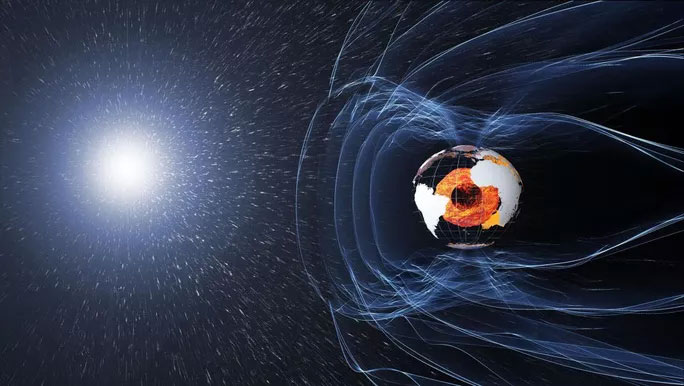According to Science Alert, this geomagnetic disturbance is known as the Laschamp event. During this time, both the northern and southern magnetic fields of the planet weakened, tilted, and decreased in intensity everywhere.
This reduction diminished the magnetic force that directs high-energy solar particles toward the poles, where they interact with atmospheric gases to create auroras during solar storms.

Earth with a molten core determining the magnetic field, the magnetosphere like soft armor, and the Sun – (Graphic from ESA)
Therefore, when the Laschamp event occurred, auroras were no longer confined to the Arctic and Antarctic regions but sometimes wandered as far as the equator, according to a recent study presented at the annual meeting of the American Geophysical Union held in New Orleans.
Presenter Agnit Mukhopadhyay from the Department of Space Science and Climate at the University of Michigan stated that this intense period of magnetic field changes had a profound impact on the atmosphere and living conditions on Earth. A weakened magnetosphere means the planet is less protected from harmful cosmic rays, the most common being solar radiation.
To reach this conclusion, the research team utilized a series of models based on magnetic data from Earth hidden in ancient rock sediments, volcanic data, several simulations of the Laschamp event, and simulations of magnetosphere interactions with solar wind…
They found that the planet’s magnetosphere shrank to about 3.8 times the radius of Earth during this dark period. This event allowed solar winds to penetrate the magnetosphere easily, destroying the ozone layer, and may have contributed to the disappearance of ancient Neanderthal humans in Europe, which remains a mystery to this day.
Neanderthals are a different species from our own, Homo sapiens, both belonging to the genus Homo.


















































